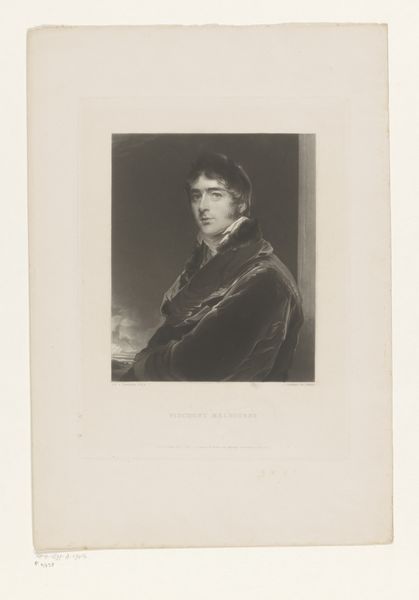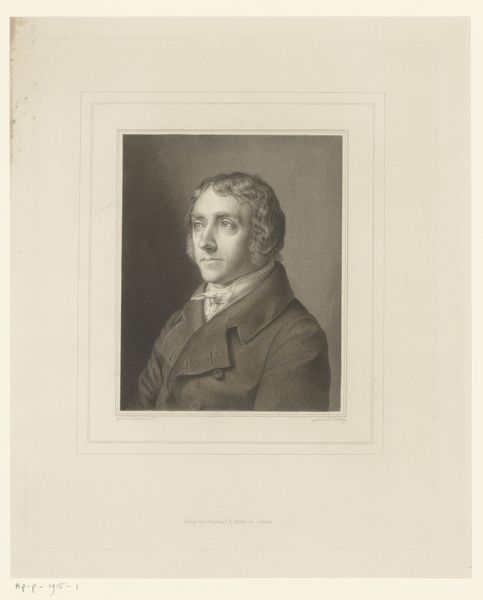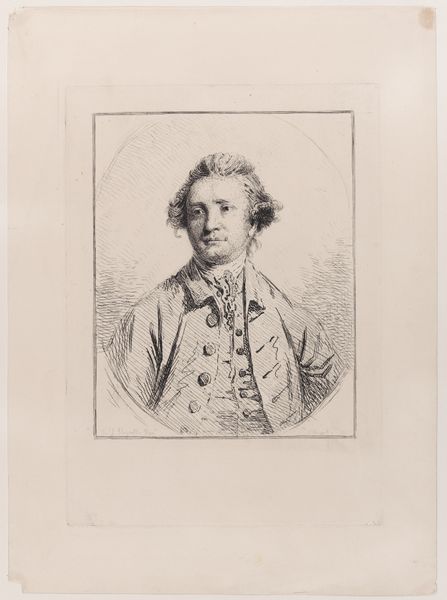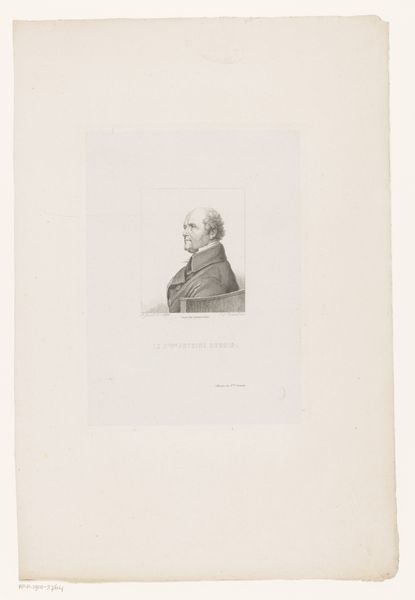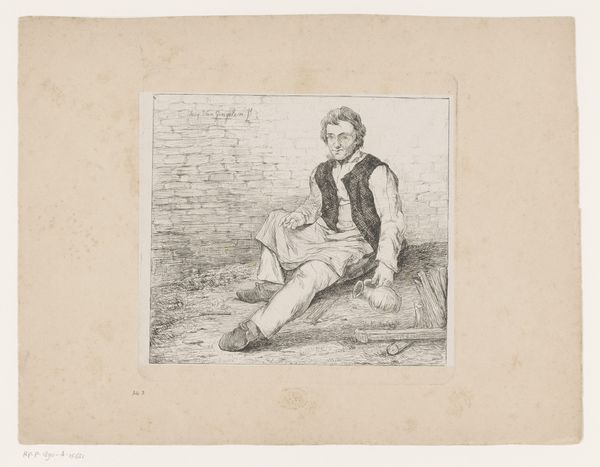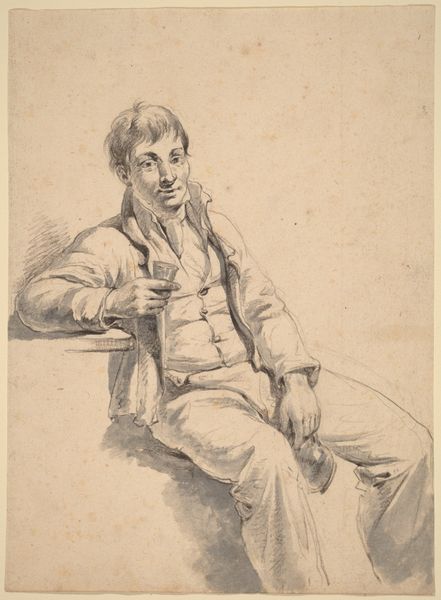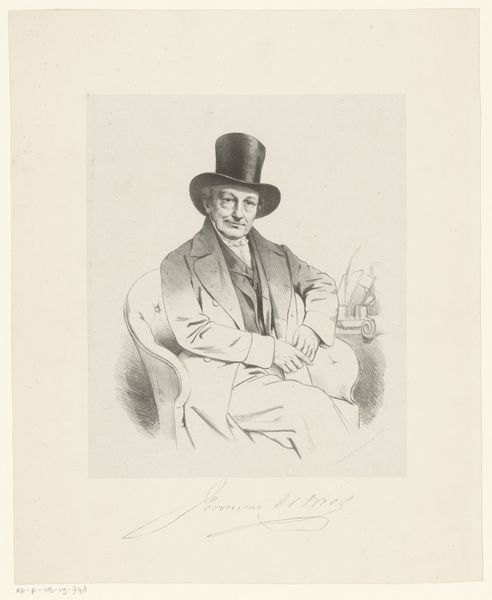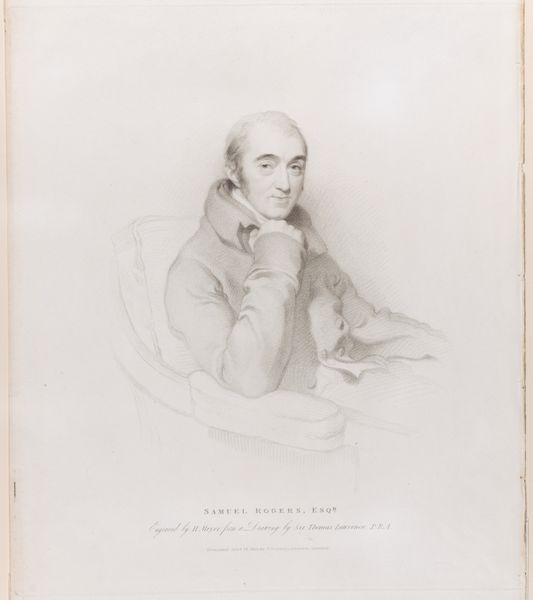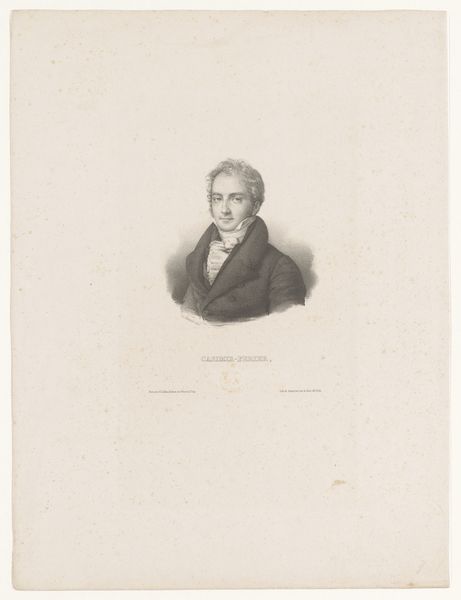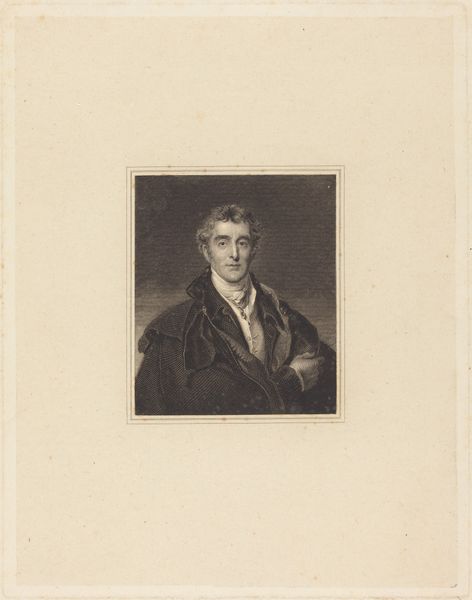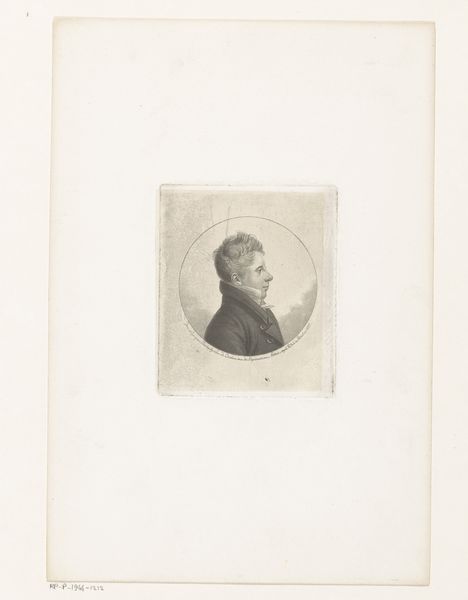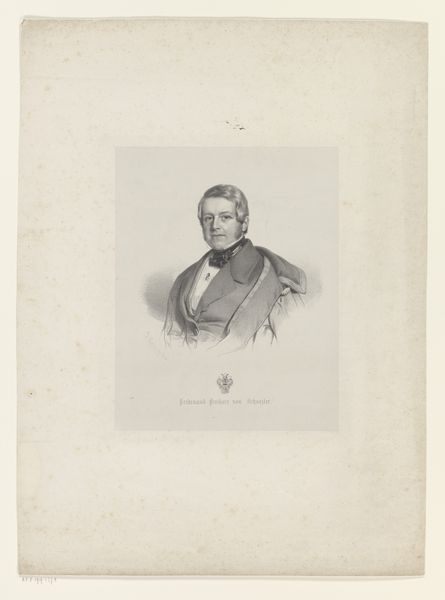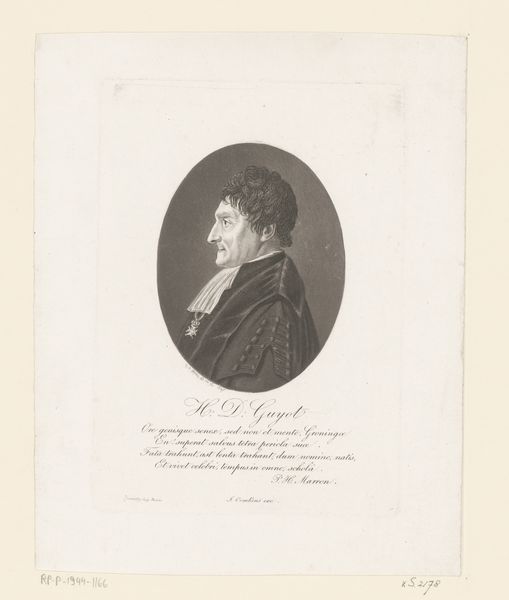
drawing, print, pencil
#
portrait
#
drawing
#
neoclacissism
# print
#
pencil drawing
#
pencil
#
portrait drawing
#
academic-art
Dimensions: height 394 mm, width 315 mm
Copyright: Rijks Museum: Open Domain
Curator: Here we have Louis Pierre Henriquel-Dupont’s "Portret van Alexandre Brongniart," created in 1850. The medium appears to be pencil drawing, though it's categorized as a print as well. What’s your first take on this image? Editor: An aura of reserved dignity. The sitter seems self-possessed. It almost conveys a kind of… melancholic resolve, doesn't it? But is he truly at ease, or burdened? The artist renders such palpable tension in his gaze and posture. Curator: Indeed. Neoclassicism favored portraying individuals with a sense of civic virtue and intellectual gravitas. Brongniart, the subject, served as director of the Sèvres porcelain manufactory for decades. This institution was once linked with royal privilege, so this artwork must carry complicated symbolism tied to pre and post revolutionary France. Editor: Absolutely. And there is something about this drawing's composition. It feels almost like a deliberate act of framing, carefully constructed to communicate the symbolic meaning associated with men in power during a period marked by socio-economic imbalances, right? I see echoes of the shifts in power structures in 19th-century France. Is Henriquel-Dupont being critical or complicit? Curator: Interesting question. Alexandre Brongniart helped revitalize the factory in the early 1800s, earning the cross of the Légion d'honneur, which is inscribed near his image on the print. Perhaps the cross alludes to ideas of nationalism and meritocracy that grew out of the revolution. Henriquel-Dupont worked from life and created the design as an engraving for Achille Collas. To me the tight cross-hatching emphasizes texture while embodying a classic restraint and formality of an earlier era. Editor: Restraint certainly seems to be the operative word here, especially when viewing Brongniart's composed demeanor and somber features against the broader canvas of the revolutions and changing social landscape of the 19th Century. To what degree were the symbols embedded in such artistic portrayals consciously deployed as part of shaping and communicating the power? Curator: Those symbols help encode lasting narratives and moralizing meanings, and allow the work to resonate across generations. I’m drawn to the work's historical positioning that captures societal changes via one man's image, while also creating a space to analyze how we’ve interpreted similar visual forms. Editor: Indeed. This dialogue, underscored by symbols of shifting values, reminds us that even a seemingly restrained portrait speaks volumes when situated in the right context.
Comments
No comments
Be the first to comment and join the conversation on the ultimate creative platform.

